March 1 - Puno to Cuzco
Steven Dutch, Professor Emeritus, Natural and Applied Sciences,
University of Wisconsin - Green Bay
Dawn on Lake Titicaca
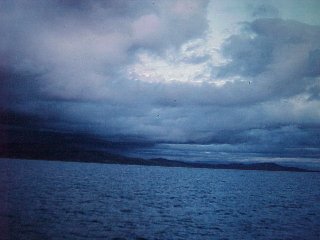
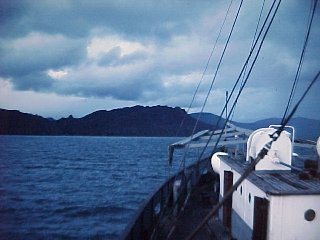
We docked at Puno and cleared customs. Oddest question on the customs form: they wanted to know how much gold I was carrying in bar form. A hundred kilos; doesn't everybody?
Reed Boats
For a few miles the tracks hug the lake shore and some of the traditional reed boats used on the lake were visible. I suspect they're still there. This is a poor country. Reeds are free and easily repaired.
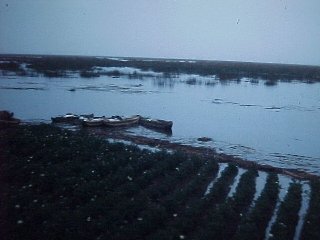
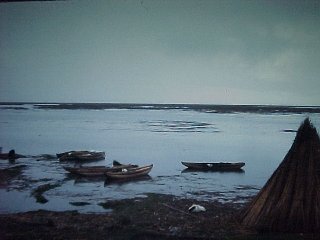
Decorum? What's That?
"Rollicking" is the word that comes to mind to describe this train ride. Any pretense we were going to have a nice placid ride vanished at the first stop when vendors swarmed aboard to sell things. (A few left with stuff they didn't carry on, but that's another story.) So we all went with the flow. By the end of the day we had card games with total strangers going across the aisle, conversations in half a dozen languages, and generally had a blast. Someone went to the next car and said it was totally different: staid and stuffy. Too bad. They missed all the fun. The bearded guy in the Inca hat is actually from Switzerland.
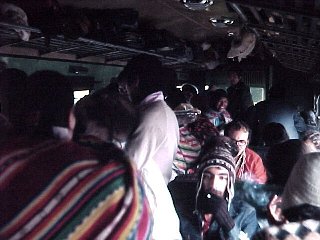
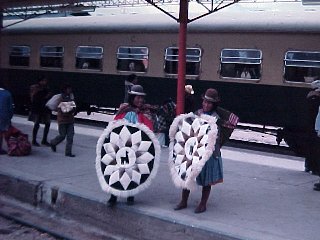
The High Andes
Snow line at this latitude (about 14 degrees south) is about 17,000 feet.
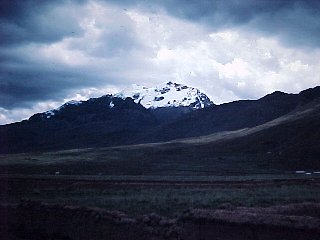
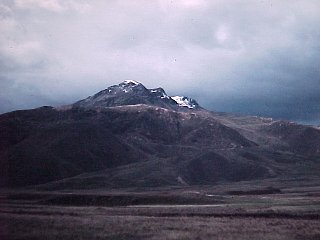
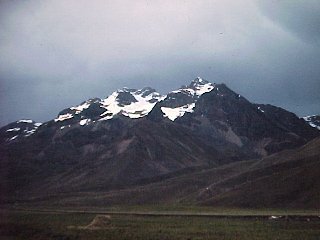
I did a double-take when I saw the ridge on the left side of the valley, then recovered in time to get pictures. Moraines are where you find them, even in the tropics in Peru. The ice cap in the background has actually become a valuable source of climatic data. The ice layers contain a long record of climate in this part of the world.
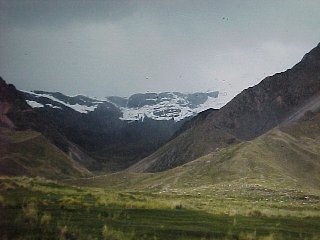
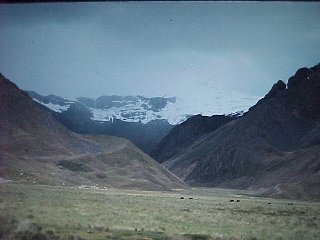
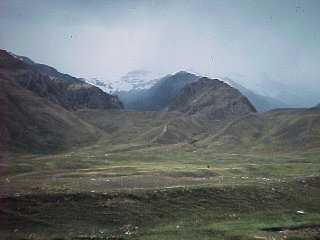
Approach to Cuzco
Late in the day the train entered a deep valley and headed down into Cuzco. The swaying train was a perfect accompaniment to the merry chaos inside.
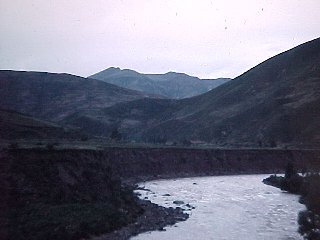
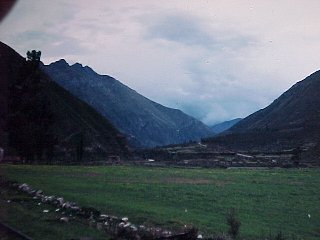
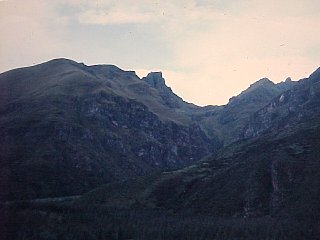
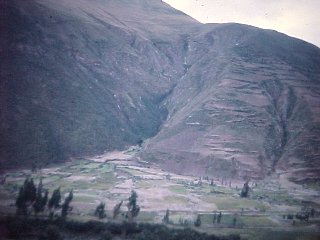
Return to Antarctica-South America 1975
Index
Return to Professor Dutch's Home
Page
Created 15 February 2000, Last Update